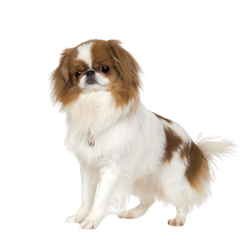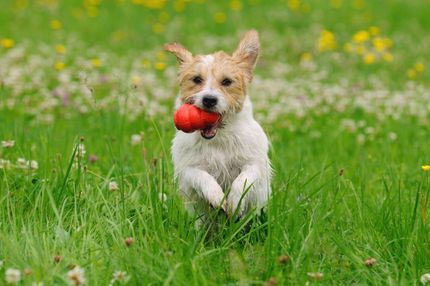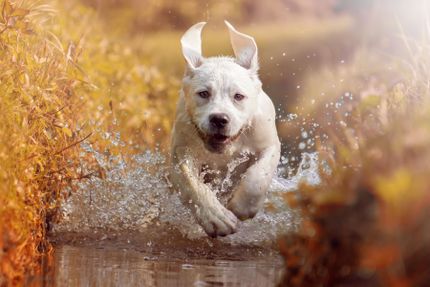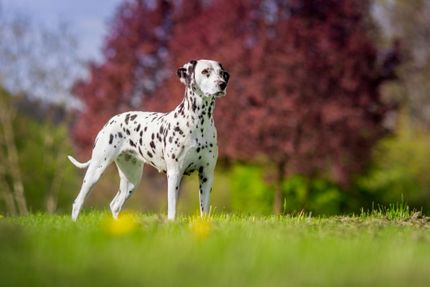Chin-wa:Chihuahua and Japanese Chin Mix
Facts & Origin
Chihuahua and Japanese Chin Mix - a hybrid breed.
This fun-loving mixed breed is the perfect companion for anyone looking for a furry friend. The Chihuahua and Japanese Chin are a great combination of two popular breeds and are guaranteed to put a smile on your face.
What are breed characteristics of this mix dog?
The Chihuahua-Japanese Chin mix is a small, compact dog weighing between 3 and 6 kg. They measure between 20 and 30 cm at the shoulder and have a long, slender neck. The head is rounded with large, dark eyes and erect ears. The body is long and muscular, the coat is short and smooth. The tail is long and tapered and can be carried curled over the back.
| Alternate Name | - |
| Origin | Mexico - Japan |
| Life expectancy | 12 - 20 years |
| Care requirements | low-maintenance - high-maintenance |
| Activity level | low |
| FCI group | not recognised |
| AKC group | not recognised |
| KC group | not recognised |
More Chihuahua mixes
More Japanese Chin mixes
Attitude, character and temperament of the breed
Possible character traits of Chihuahua and Japanese Chin Mix - Such is probably his nature.
Chihuahuas are the smallest dog breed and are known for their large, pointed ears and big, round eyes. They are also one of the longest-lived dog breeds with an average lifespan of 15 years.
Chihuahuas are loyal and protective of their owners, but they can also be very independent. They usually get along well with other animals and children, although they can sometimes be headstrong and stubborn.
Japanese Chins are a small, aristocratic breed of dog with a long, silky coat. They are known for their calm and gentle nature and are often described as cat-like in their behavior.
Japanese Chins are generally good with other animals and people, although they can be shy around strangers. They are generally low-maintenance dogs that do not require much exercise.
The Chihuahua-Japanese-Chin mix is a hybrid breed that combines the best of both worlds. These dogs tend to be small and compact, with large, round eyes and long, silky coats. They are intelligent and loyal, but also independent and headstrong. They make great companion animals and usually get along well with other animals and children.
Character
Usage


Health and breeding information
What diseases can occur in Chihuahua and Japanese Chin Mix.
The Chihuahua Japanese Chin Mix is a small, energetic breed that is known for being loyal and loving. They are also known to be prone to a number of health problems, especially those that affect the respiratory system.
The most common health problem of Chihuahua-Japanese-Chin mixes is allergies. Allergies can cause a variety of symptoms such as itching, sneezing, watery eyes and a runny nose. In some cases, they can also cause skin problems such as hot spots and hair loss.
Another common health problem in this breed is collapsing trachea. This condition occurs when the cartilage in the trachea weakens, causing the trachea to collapse. Symptoms include coughing, wheezing and difficulty breathing.
If your Chihuahua Japanese Chin Mix is exhibiting any of these symptoms, be sure to have them examined by a veterinarian. With proper treatment and care, most dogs with these symptoms can live happy, healthy lives.
What does this mixed breed look like?
The Chihuahua-Japanese-Chin mix is a small, petite dog with a short coat of soft, silky material. The most common colors are black and white, but they also come in brown and tan and occasionally other colors. The hair on the head is often longer than the body coat, and around the neck they have a thick ruff.
| Fur length | medium - long |
| Fur | flat coated |
| Ear shape | Standing Ears - Floppy Ear |
| Tail | lang - rolled up |
| Anatomy | slim, slim |
| Size ♀ | 15 - 27 cm |
| Weight ♀ | 1 - 7 kg |
| Size ♂ | 15 - 27 cm |
| Weight ♂ | 1 - 7 kg |
| Suitable For | Children, Seniors, Beginner, Children, Seniors |
Known Diseases
Eye infections
Chronic eye infections can be very painful in dogs and can be treated with medication. In rare cases, the cornea must be treated.
Eye diseases
Often occur with allergies and intolerances.
Hypoglycemia
If an insulin dose was overdosed or accidentally administered twice, the dog may experience hypoglycemia.
Tartar
If dogs don't get a good food or sugary food, tartar can quickly appear.
Cataract
Cataracts are still one of the most common causes of blindness, even in dogs.
Useful Articles
You can find articles that might interest you in the dogbible blog to match your favorite breed.
Visit our magazineto stay up to date on dog trends.
To find out more, view our Privacy Policy
Find here the breed that suits you and find out what character traits it has. Here you can also learn more about the origin, size and weight of your favorite breeds.
Matching your favorite breed, you'll find articles that might interest you on the dogbible dog blog.
Vacation with the dog at the sea: Is salt water dangerous for my treasure?
Gastritis in dogs - cause, diagnosis and treatment
Cancer in dogs - cause, diagnosis, prevention of cancer in dogs
Eye discharge (epiphora) in dogs - causes, control
MDR1 mutation - everything you need to know about it if you have a dog















